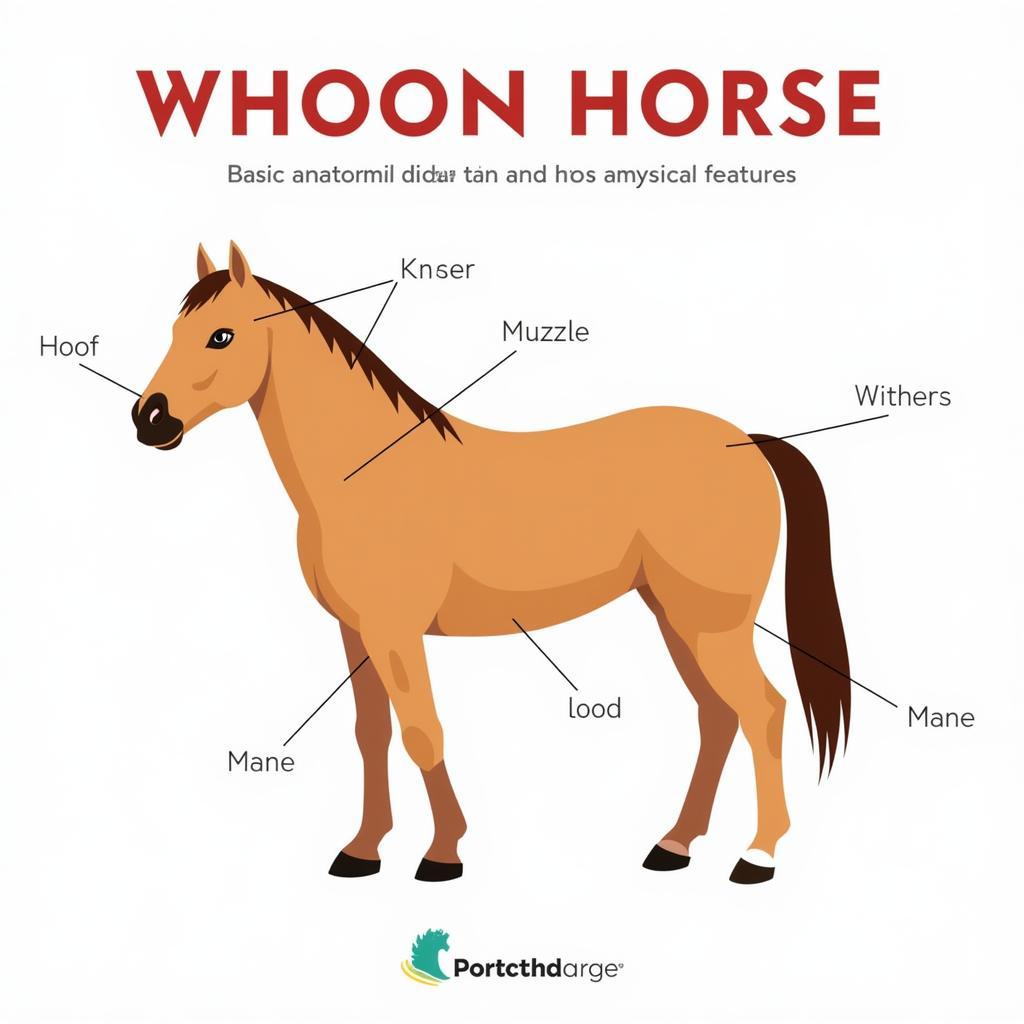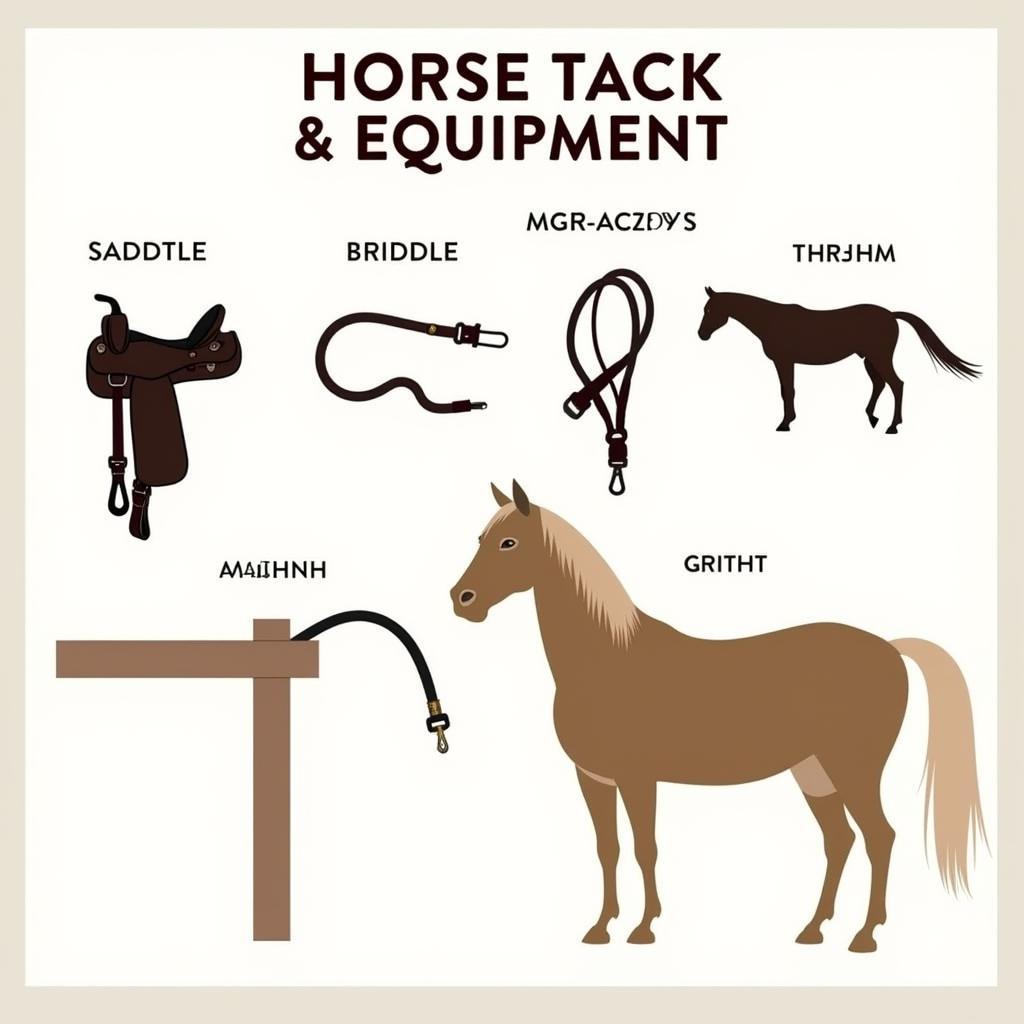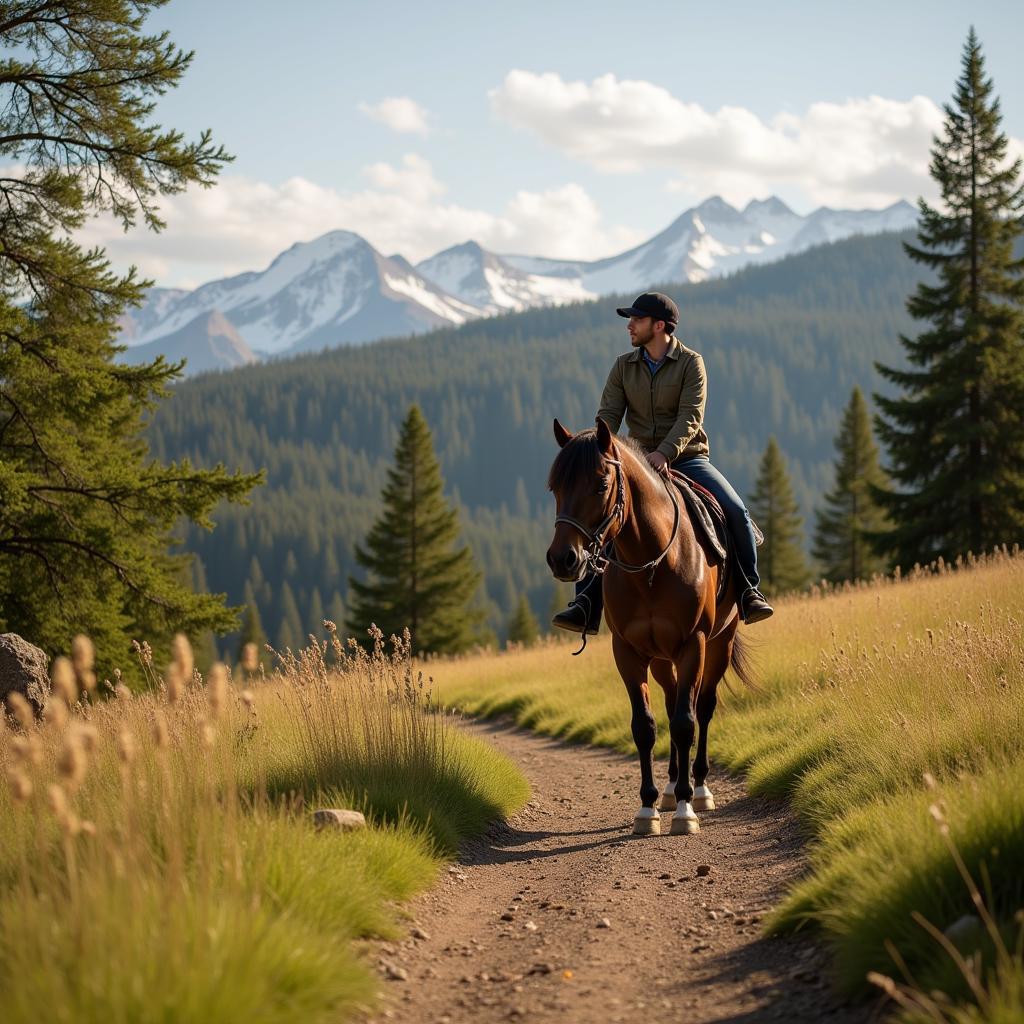Understanding the world of horses goes beyond admiring their beauty and grace. It requires learning a unique language filled with terms that describe everything from their physical attributes to their gaits and even their personalities. Whether you’re a seasoned equestrian or a curious beginner, familiarizing yourself with common horse terms can deepen your understanding and appreciation of these magnificent creatures.
Common Horse Terms For Physical Attributes
Let’s start with the basics – how to describe a horse’s physical features:
- Coat: A horse’s coat refers to the color and pattern of its hair. Common coat colors include bay, chestnut, black, and grey.
- Mane & Tail: The long hairs growing from the horse’s neck (mane) and tailbone (tail).
- Hoof: The hard, horny covering of a horse’s foot.
- Withers: The highest point on a horse’s back, located at the base of the neck.
- Muzzle: The projecting part of a horse’s head that includes the nostrils, lips, and chin.
 Horse Anatomy Terms
Horse Anatomy Terms
Horse Terms Related to Movement
Horses have various ways of moving, each with its own specific term:
- Walk: The slowest gait, a four-beat movement where each foot strikes the ground separately.
- Trot: A two-beat gait where the horse moves its legs in diagonal pairs.
- Canter: A three-beat gait that is faster than a trot and slower than a gallop.
- Gallop: The fastest gait, a four-beat movement where the horse’s legs move in a specific sequence.
- Soundness: Refers to a horse that is free from any lameness or injuries affecting its movement.
“Understanding the subtle differences in a horse’s movement can tell you a lot about their health and temperament,” says Dr. Emily Carter, a veterinarian specializing in equine care. “A sudden change in gait is often the first sign that something might be wrong.”
Horse Terms for Age and Gender
Just like with other animals, horses have specific terms to denote their age and sex:
- Foal: A young horse of either sex, typically under a year old.
- Filly: A female horse under four years old.
- Colt: A male horse under four years old.
- Mare: A mature female horse, four years or older.
- Stallion: A mature, uncastrated male horse.
- Gelding: A castrated male horse.
Horse Tack and Equipment Terminology
Navigating the world of horse tack requires a glossary of its own. Here are some essentials:
- Saddle: A padded seat secured on a horse’s back for the rider. Different types of saddles are designed for specific disciplines.
- Bridle: Headgear used to control a horse, consisting of a headstall, bit, and reins.
- Bit: The metal mouthpiece of a bridle that sits in the horse’s mouth, used for communication and control.
- Reins: Long straps attached to the bit, held by the rider to direct the horse.
- Girth: A wide strap that goes around a horse’s belly to secure the saddle.
 Essential Horse Tack
Essential Horse Tack
Horse Terms for Disciplines and Riding Styles
The equestrian world is filled with various disciplines, each with its own set of specialized terms. Here are a few examples:
- Dressage: A highly skilled discipline focused on precision and harmony between horse and rider.
- Jumping: A discipline that involves guiding a horse over a series of obstacles.
- Western Riding: A style of riding that originated in the American West, characterized by its use of a Western saddle and focus on horsemanship.
- Trail Riding: Riding for pleasure on trails and natural terrain.
Why Knowing Horse Terms is Important
Whether you dream of [rocking horse company] or are simply fascinated by these majestic creatures, understanding basic horse terminology can greatly enhance your experience. It allows you to communicate effectively with other horse enthusiasts, follow riding instructions, and provide better care for your equine companion.
 Enjoying a Trail Ride
Enjoying a Trail Ride
Horse Terms FAQ
Q: What does it mean if a horse is “headshy”?
A: A headshy horse is nervous or fearful of having its head touched.
Q: What does “sound” mean when referring to a horse?
A: A “sound” horse is free from any lameness or injuries affecting its movement.
Q: What’s the difference between a “pony” and a “horse”?
A: The distinction is primarily based on height. A pony is any equine measuring under 14.2 hands (58 inches) at the withers, while a horse is any equine over that height.
Explore More Horse-Related Topics
Interested in learning more about horses? Explore our other informative articles on Justus Horses USA:
- Iron horse font
- Names for horses for night at the races
- Rocking horse company
- 60 horse mercury
- White paint for horses
This glossary covers just a fraction of the many interesting horse terms out there. As you continue your equestrian journey, you’ll undoubtedly encounter more terms that deepen your understanding of these incredible animals.
Don’t hesitate to reach out if you have any questions or need further assistance. Contact us at Phone Number: 0772127271, Email: [email protected] Or visit us at QGM2+WX2, Vị Trung, Vị Thuỷ, Hậu Giang, Việt Nam. Our customer support team is available 24/7.